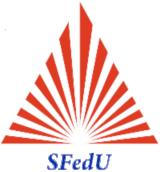Alla Sergeevna Kuzmenko
Associate Professor
Institute of Radioengineering Systems and Control

Research interests:
Modeling of working processes of implementation of aviation-chemical works. Features and prospects of application the vetroprivod on agricultural aircraft. Development of a mathematical model of the wind turbine in non-uniform oncoming flow taking into account the experimental data the software package, a comprehensive assessment of the conditions and performance of the vetroprivod based on the data of the aircraft and its flight.
Teaching:
-
Aviation materials
Module 1. Purpose and structure of the course. The concept of isotropy and anisotropy. The defects of the crystal structure. The process of crystallization. Diffusion in metals. The structure types of metals. Fundamentals of the theory of alloys. Properties of metals and testing. Crystallization of alloys. State diagram. The relationship between the properties of the alloy and the type of the state diagram.
Module 2. Crystallization of alloys. State diagram. Heat treatment of alloys. Steel. Principal of heat treatment of steel. Chemical heat treatment of steel. The definition of sensitivity to notches. The transformations occurring in the structure of steel during heating and cooling. The mechanism of the basic transformations. Strain hardening. Classification of steels. Chemical composition.
Module 3. Non-ferrous metals and alloys their properties and purpose. Aluminium and its alloys. Marking aluminum alloys. Cast alloys. Wrought aluminum alloys. Aluminum-based alloys their properties and characteristics. Magnesium and its alloys. Copper and its alloys. Titanium alloys. Classification and characteristics of series and groups of aluminum alloys in the United States. The corrosion of metals.
Module 4. Non-metallic materials. The particular properties of the polymers. Plastic composition and classification. Thermoplastics and thermoregulate. Laminated plastic. Resins and their characteristics. Rubber and sealants. The adhesive materials. Their composition and classification. Types of adhesive joints. Adhesive prepregs. Brand. Classification. Paint materials. Composition and classification. Glass and ceramic materials.
-
Mechanics of materials (Practical and laboratory work)
Module 1. Tasks of the subject "strength of materials". The working hypotheses. Concept about stresses, deformations, displacements. The relationship between stresses and internal force factors. Internal forces and moments and the method of their determination. The relationship between stresses and internal force factors. Geometric characteristics of flat sections. Principal axes and principal moments of inertia. Changing the moments of inertia when turning and parallel transfer of axes. Geometric characteristics of simple sections. The calculation of the main Central moments of inertia of complex shapes.
Module 2. Tension diagram. Mechanical properties of materials. Permissible voltage. Strain energy under axial tension - compression. Statically indeterminate system. The main provisions. Statically indeterminate system. The calculation is simple statically indeterminate beams. Clean shift. The relationship between moduli of elasticity. Hooke's law in shear. Calculation of bolted connections. Terms of strength
Module 3. The concept of torsion. Voltage. Deformation. Calculation of beams for strength and rigidity. Plotting shear forces and bending moment. Control the correctness of the construction plots. Determination of normal stresses in bending. Strength condition. Determination of shearing stresses in bending (formula Zhuravsky). Strength condition. Full scan beams for strength. The concept of the center of the bend. Method of forces for calculation of statically indeterminate systems. Canonical equations of the method of forces. The degree of static indetermination. Basic and equivalent systems. The concept of statically indeterminate planar frames.
Module 4. Determination of displacements. Stability of compressed rods. Determination of critical stress. The conclusion of Euler's formula. The critical voltage. Flexibility. The influence of the method of fixing ends of the rack. Stability of compressed rods. The limits of applicability of Euler's formula. Rational types of cross sections and methods of fastening. The limit of endurance. Factors affecting the endurance limit.
-
Computer science and information technology.
Introduction. The goals and objectives of the course. The value of information in the development of society in the 21st century. The processes of collection, transmission, processing and accumulation of information.Technical and software of realization of information processes. Model the solution of functional and computational problems. Algorithmization and programming. Programming languages of high level. Database. Software and programming technology. Local and global computer network. The basics of information security. Methods of information protection.


